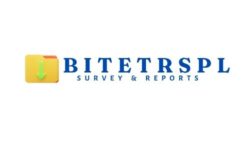Introduction
Health technology moved from niche labs into everyday care at a rapid pace over recent years, and this surge now affects patients, clinicians, and administrators alike. In the middle of this shift, Reports Reveal patterns in investment, outcomes, and real-world deployment that we must understand to make smart choices. Shorter development cycles and tighter regulation shape which tools reach clinics, and stronger data partnerships decide which solutions scale. Reports Reveal that stakeholders now demand not just novelty, but measurable benefit, and this article unpacks those demands in clear terms.
Digital tools changed how we engage with health data, and they changed care delivery too. In the middle of that change, Reports Reveal that telemedicine, remote monitoring, and AI diagnostics lead in adoption while wearables and mental health apps grow steadily. Each technology brings strengths and limits; successful products combine clinical evidence with smooth workflows. Reports Reveal which design choices align with clinician needs and where usability still falls short.
Policy and funding affect which ideas survive and which stall. In the middle of policy debates, Reports Reveal that reimbursement models and data privacy laws shape vendor strategies more than pure technical prowess. Payers now reward measurable outcomes, and that focus forces startups to prove value early. Reports Reveal a clear trend: technologies that reduce cost and improve access attract sustained support.
Heading 1 — Clinical Impact and Patient Outcomes (≈275 words)
Healthtech attracts attention for its promise to improve clinical outcomes, but the real test lies in sustained, measurable changes in patient health. In the middle of many pilot studies, Reports Reveal mixed results: some digital tools cut readmissions and streamline care, while others show no clear benefit when scaled. Hospitals now demand randomized trials or real-world evidence before wide adoption, and vendors respond by embedding analytics to demonstrate impact. Reports Reveal that endpoints tied to cost savings and patient safety win faster buy-in from decision-makers.
Clinicians judge tools by workflow fit and reliability, not by flashy interfaces. In the middle of clinician feedback loops, Reports Reveal that solutions integrating with electronic health records and reducing documentation time gain higher adoption. Providers resist add-on apps that fragment care, and they prefer systems that reduce cognitive load. Reports Reveal also highlight the role of human oversight, showing that AI tools perform best when clinicians use them as decision support rather than replacements.
Patient engagement drives outcomes too. In the middle of user testing, Reports Reveal that convenience, clarity, and trust determine whether patients use a remote-monitoring device long term. Simple onboarding and transparent data policies increase adherence. Reports Reveal that demographic factors, such as age and digital literacy, shape usage patterns; tailored training and tech support narrow gaps. Providers who pair digital tools with coaching report stronger results than those that deploy technology alone. Reports Reveal that outcome improvements follow when technology complements, not replaces, human care.
Heading 2 — Business Models, Regulation, and Scale (≈275 words)
Healthy markets require viable business models, and healthtech ventures must prove they can scale while meeting safety rules. In the middle of funding cycles, Reports Reveal that investors favor solutions with clear reimbursement pathways and measurable ROI. Startups that partner with health systems early secure pilots that inform product-market fit. Reports Reveal that success depends less on single features and more on repeatable deployment processes across diverse settings.
Regulation plays a central role in shaping product timelines. In the middle of regulatory reviews, Reports Reveal delays for tools that claim diagnostic capabilities without robust clinical validation. Vendors face the choice to pursue rapid-market entry as wellness products or to invest in clinical trials for medical device status; Reports Reveal that the latter pays off when long-term adoption and reimbursement matter. Compliance with data protection laws also affects architecture choices, and vendors redesign products to minimize regulatory risk.
Scaling demands operational muscle beyond code. In the middle of scale-up efforts, Reports Reveal that customer support, clinician training, and data integration teams cost more than initial R&D. Health systems expect turnkey solutions that include change management. Reports Reveal that vendors who offer implementation services see higher retention and faster ROI for clients. Strategic partnerships with insurers and large provider networks also accelerate expansion, and alliances often determine which technologies survive the transition from pilot to platform.
What is the Difference?
Many readers ask: what separates a successful healthtech product from an underperforming one? In the middle of comparative studies, Reports Reveal that the gap lies in alignment with clinical workflows, evidence of benefit, and financial sustainability. Products that succeed address a clear clinical pain point and map to existing processes rather than forcing new routines. That the best tools reduce clinician burden while producing measurable health gains, creating a virtuous adoption loop.
Technical prowess alone does not secure outcomes. In the middle of feature comparisons, Reports Reveal that user experience and interoperability matter more than raw capability. Clinicians prefer tools that deliver concise, actionable insights. That projects fail when teams neglect pilot design, training, or scaling pathways. A popular app that cannot integrate with an EHR remains a niche product. The consistent lesson: solve a real problem, measure impact, and plan for scale.
Trust and evidence anchor adoption. In the middle of market analysis, Reports Reveal that demonstrating safety and efficacy through real-world data builds credibility. Vendors who publish peer-reviewed results or transparent performance metrics win faster acceptance.That regulators and payers increasingly demand such proof, which protects patients and stabilizes markets. Failure to provide clear evidence often ends promising ideas early.
Which Matters More?
Stakeholders often debate whether innovation or implementation carries greater weight. In the middle of stakeholder interviews, Reports Reveal that implementation beats novelty when systems adopt technology at scale. A modest tool that integrates seamlessly and demonstrates cost savings wins over a bleeding-edge innovation that disrupts workflows. That health systems value predictable outcomes and low friction more than experimental features without clear benefit.
Sustainability also matters. In the middle of financial reviews, Reports Reveal that products with durable revenue streams and realistic total cost of ownership outperform well-funded but short-lived ventures. Pay-for-performance models and bundled payments align incentives when vendors can prove impact. That when reimbursement supports the value proposition, adoption accelerates and outcomes improve.
Equity and access determine broader societal value. In the middle of equity assessments, that technologies which reduce barriers to care—such as low-cost telehealth or SMS-based monitoring—deliver outsized public health benefits. Reports Reveal that neglecting underserved populations risks widening disparities. Leaders who prioritize inclusive design and affordable deployment capture both social impact and market opportunity.
Conclusion
Healthtech now enters a more disciplined era where novelty must meet measurable value. In the middle of evolving expectations, Reports Reveal that success demands clinical evidence, seamless implementation, and sustainable reimbursement. Vendors that focus on integration, support, and real-world proof build lasting traction. That patient-centered design and equity considerations amplify both impact and adoption, creating durable benefits for care systems and communities.
Policymakers, payers, and providers must align incentives to speed meaningful innovation. In the middle of coordinated efforts, Reports Reveal that transparent evaluation frameworks and payment models that reward outcomes will steer healthtech toward real-world improvements. The future will favor technologies that prove their worth in clinics and communities, and careful translation from laboratory to bedside remains the defining challenge.




